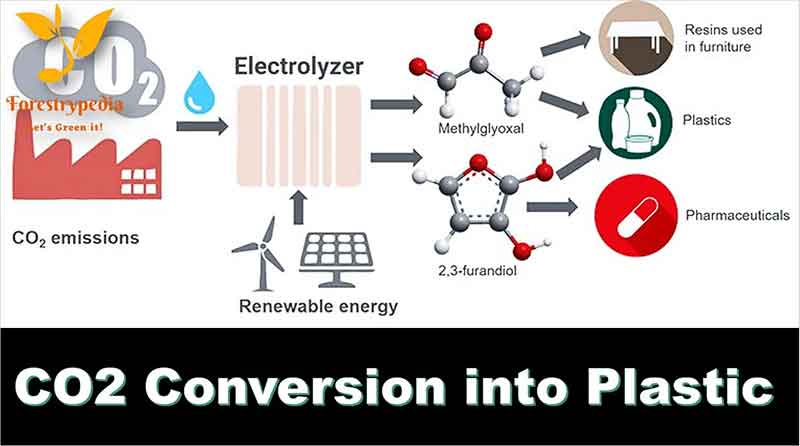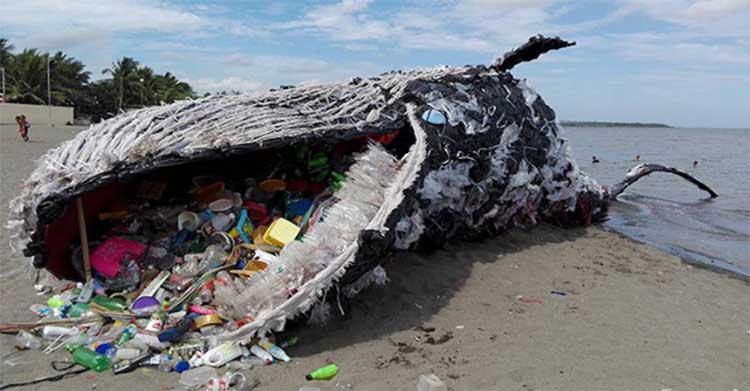
Chemicals leaching from plastics are leaving Americans notably sicker and poorer, according to a new study found. By contributing to the development of chronic disease and death, a group of hormone-disruptive plastic chemicals is costing the U.S. health care system billions — over $249 billion in 2018 alone, according to findings published on Thursday in the Journal of the Endocrine Society.
That is the equivalent of 5 percent of U.S. health care costs and more than 1 percent of the U.S. gross domestic product (GDP), the New York University researchers found.
To put that number in context, 2018 saw a year-over-year GDP growth of about 3 percent, a third of which chemicals such as PFAS, phthalates and biophenols ate up.
Most of those costs ($161 billion) came from polybrominated diphenyl ethers (PBDEs), which are chemicals used as flame retardants in electronics, furniture and textiles.
These can easily enter the environment, becoming more concentrated as they move through the food chain.
About half as much, an estimated $67 billion, came from phthalates, an additive used to make plastics such as PVC more durable and flexible.
The surge in plastics production represents “a dangerous and unnatural experiment,” said Leonardo Trasande, a pediatrician at New York University’s School of Medicine.
“We are coming to reckon with the reality that this is an urgent human health problem,” he added.
By interfering with the chemical messengers governing the human body, micro- and nanoplastics led to a stark increase in conditions including obesity, preterm birth, cancer and heart disease, researchers found.
“Hormones are the signaling molecules underlying basic biological functions: temperature, metabolism, salt, sugar and sex,” Trasande said.
“When these hormones are hacked, there are a broad array of consequences, cradle to grave,” he added, with particularly pernicious impacts on “the developing brains” of young children.
In all cases, the scientists studied chemicals that can leach directly from intact plastics into food, unlike micro- and nanoplastics, which are produced when plastics to break down.
Because their tiny size facilitates the transfer of chemicals out of plastic particles, however, Trasande called plastic particles “carrier pigeons” for these hormone disrupting chemicals.
Because of that property, phthalates are often used in products ranging from food packaging to films used in greenhouses, from which chemicals can leach directly into food.
Because they interfere with the body’s ability to produce and process fats, phthalates contribute to obesity and diabetes.
But they can also mimic sex hormones in a way that leads to testicular and breast cancer.
Finally, about $22 billion in health impacts came from PFAS (per- and polyfluorinated substances), a set of new plastics derived from coal tar notable for their ability to resist heat, water, stains and grease.
As such, PFAS are commonly used in products such as disposable food packaging and takeout containers and industrial food processing.
But the same qualities that make PFAS useful also make it very difficult for the body to break down, which is why the compounds are known as “forever chemicals.”
And scientists have linked them to diseases from cancers to liver and kidney problems to low birth weight in children to disruptions to the thyroid gland, something Trasande said is particularly concerning in the case of prenatal exposure, because thyroid hormones are “crucial to a baby’s brain development.”
The scientists emphasized that actual impacts of plastic pollution are likely far higher than those found in the study.
That is because they restrained their search to just the best documented costs, from the best documented diseases, from just a handful of the most clearly pernicious plastic chemicals.
These findings are therefore “an underestimate of an underestimate of an underestimate,” Trasande said.
The team also emphasized that there is a clear solution, both in personal and policy terms: For all chemicals but PFAS, people and societies can drastically reduce their exposure quite quickly by cutting their use of nonessential plastics.
Trasande pointed to the famous scene in the 1967 film “The Graduate,” in which an older relative advises Dustin Hoffman’s character to consider a future in “plastics.”
Before that movie came out, “we used glass and stainless steel more widely, without consequences for the ability of human living,” Trasande said.
“There are essential uses for plastic, not what we are debating. We are talking nonessential uses that have exploded.”
He pointed to “the proverbial cucumber in the plastic wrap,” or disposable plastic devices sealed in a layer of disposable plastic.
But ultimately, the scientists emphasized the importance of securing a binding deal through a specific political process, the ongoing and broadly popular United Nations attempt to secure a treaty to drastically reduce global plastic pollution.
This is a process that the fossil fuel industry is attempting to steer away from any discussion of bans of dangerous chemicals, or any kind of reduction in plastic production.
That push comes as the fossil fuel industry, which plans to dramatically increase plastics production in order to make up for declines in its market share amid the growth of renewables, according to research from the Beyond Plastics program at Bennington College.
While the plastics treaty process has focused on costs to the environment, however, it is just as important for negotiators and regulators to focus on human health impacts, the scientists said.
For Trasande, the dynamic is something like a treadmill of plastic-induced disease: As plastic polymers and additives are found to be toxic, the industry generates new ones — and around the process goes.
“We continue to identify human health consequences for new and replacement chemicals,” he said.
“But at some level, you have to take a step back and say, ‘1 percent of GDP is being wasted on the human health impacts of an industry that makes money off people’s backs.’”
That, he said, “is a problem. I don’t think people quite appreciate that, or the need to speak out about that.”
While estimates of the health costs of plastics have been done in the past, the new study provides a “a better understanding of both potential exposure routes but also potential targets for solutions,” said researcher Bethanie Carney Almroth, professor of ecotoxicology and environmental science at the University of Gothenburg in Sweden.
“And since money talks, this could be a powerful tool in helping people, from consumers to policy makers, in understanding the importance of regulating these chemicals,” said Carney Almroth in an email. She was not involved in the research.
Hopefully the new study can initiate a societal discussion about the use of plastics and the related health risks, said Jane Muncke, managing director and chief scientific officer at the Food Packaging Forum, a nonprofit foundation based in Zurich focused on science communication and research. She, too, was not involved with the new study.
“These health costs are currently paid for by society and by the individuals who suffer from the diseases, while the plastics manufacturers and businesses that use plastics for their products make handsome profits,” Muncke said.
“This seems very unjust, and hopefully this study can initiate a discussion about true cost accounting — according to ‘the polluter pays’ principle,” she said in an email.
The new research analyzed the impact of four groups of chemicals used in the production of plastic products: Flame retardants called polybrominated diphenyl ethers, or PBDE; phthalates, which are used to make plastic more durable; bisphenols such as BPA and BPS used to create hard plastics and resins; and per- and polyfluoroalkyl substances, also known as PFAS.
13,000 Chemicals
However, these are just a fraction of the chemicals used to make plastics. A United Nations report published in May found more than 13,000 chemicals are used in plastics production.
“There are over 16 thousand chemicals used to make plastics or present in finished plastic products, as a new report will show that we are publishing in the next couple of months,” Muncke said via email. “If there were data available on all of these 16 thousand plastic chemicals, I am convinced that the actual associated health costs would be far higher.”
Of those 16,000 chemicals, more than 3,000 are known to have hazardous properties, but close to 10,000 lack data, Carney Almroth said.
“To my mind, that is absolutely insane,” she said. “We don’t know what is in these products, we don’t know who is being exposed to what, we don’t know the implications of those exposures.”
The four chemicals measured in the new study have been widely studied over years and decades, experts say. All are thought to interfere with the body’smechanism forhormone production, known as the endocrine system, and cause damage to developmental, reproductive, immune and cognitive systems, the report said.
“The biggest impact of endocrine-disrupting chemicals is on children’s brain development because they disrupt thyroid hormones in pregnancy, which is crucial to that development,” Trasande said.
Flame retardants: Most of the health cost burden in the report — $159 billion — was from exposure to PBDE flame retardants, which scientists say can settle and remain for long periods in fat and other tissues in the body. The US Environmental Protection Agency is “concerned” that certain flame retardants “are persistent, bioaccumulative, and toxic to both humans and the environment.”
“The critical endpoint of concern for human health is neurobehavioral effects,” the agency said. “Because these chemicals are not chemically bound to plastics, foam, fabrics, or other products in which they are used, making them more likely to leach out of these products.”
Phthalates: This family of chemicals accounted for $67 billion of the health care costs in 2018, according to the study. Phthalates have been connected in studies with reproductive problems, such as genital malformations and undescended testes in baby boys and lower sperm counts and testosterone levels in adult males. Other studies have linked phthalates to childhood obesity, asthma, cardiovascular issues and cancer.
Phthalates are found in hundreds of consumer products, including food storage containers, shampoo, makeup, perfume and children’s toys. The synthetic chemicals may contribute to some 91,000 to 107,000 premature deaths a year among people ages 55 to 64in the US, according to an October 2021 study.
Bisphenols: Exposure to bisphenols accounted for $1 billion in 2018 health care costs, the study found. These chemicals are found in eyewear and water bottles, and they may coat some metal food cans, bottle tops and water supply pipes.
The chemical BPA has been linked to fetal abnormalities, low birth weight, and brain and behavior disorders in infants and children. In adults, BPA has been linked to diabetes, heart disease, cancer, obesity and erectile dysfunction.
Premature death was also associated with BPA exposure, a 2020 study found. People who had higher levels of bisphenol A in their urine were about 49% more likely to die during a 10-year period.
Per- and polyfluoroalkyl substances: Exposure to PFAS chemicals was associated in the study with $22 billion in health care costs. Carpets, couches, nonstick cookware, stain-resistant clothes, cell phones, cosmetics, the lining of fast-food wrappers — the list of popular products that contain PFAS are numerous and nearly impossible to avoid.
In a 300-plus-page report, the prestigious National Academies of Sciences, Engineering, and Medicine (U.S.) found “sufficient” scientific evidence of an association between PFAS and an increased risk of adult kidney cancer and abnormally high cholesterol levels. Exposure to PFAS was also associated with decreased infant and fetal growth as well as decreased antibody response to vaccines in both adults and children, according to the 2022 report.
The report recommended blood tests for people at high risk such as firefighters, workers in fluorochemical manufacturing plants, and those who live near commercial airports, military bases, landfills, incinerators, wastewater treatment plants and farms where contaminated sewage sludge is used.
People in “vulnerable life stages” — such as during fetal development in pregnancy, early childhood and old age — are at high risk, the report said.
Depending on the levels found in blood, doctors should look for signs of testicular cancer and ulcerative colitis and test thyroid and kidney function at all wellness visits, the report said. In addition, doctors should prioritize screening for cholesterol, breast cancer and hypertension during pregnancy.
“The authors (of the new study) chose to focus on the endocrine disrupting effects of the selected plastic chemicals — these are undoubtedly important, but I am also very concerned about the presence of MANY known carcinogens that are used to make plastics and that leach from plastics,” Muncke said.
“Our own work has shown that most of the plastic chemicals with hazard data available (about 25% of the 16 thousand) are carcinogenic, mutagenic or toxic for reproduction,” Muncke said in an email. “Hopefully this study can be used as stepping stone to also develop cost estimates for the incidence of cancers.”
















































